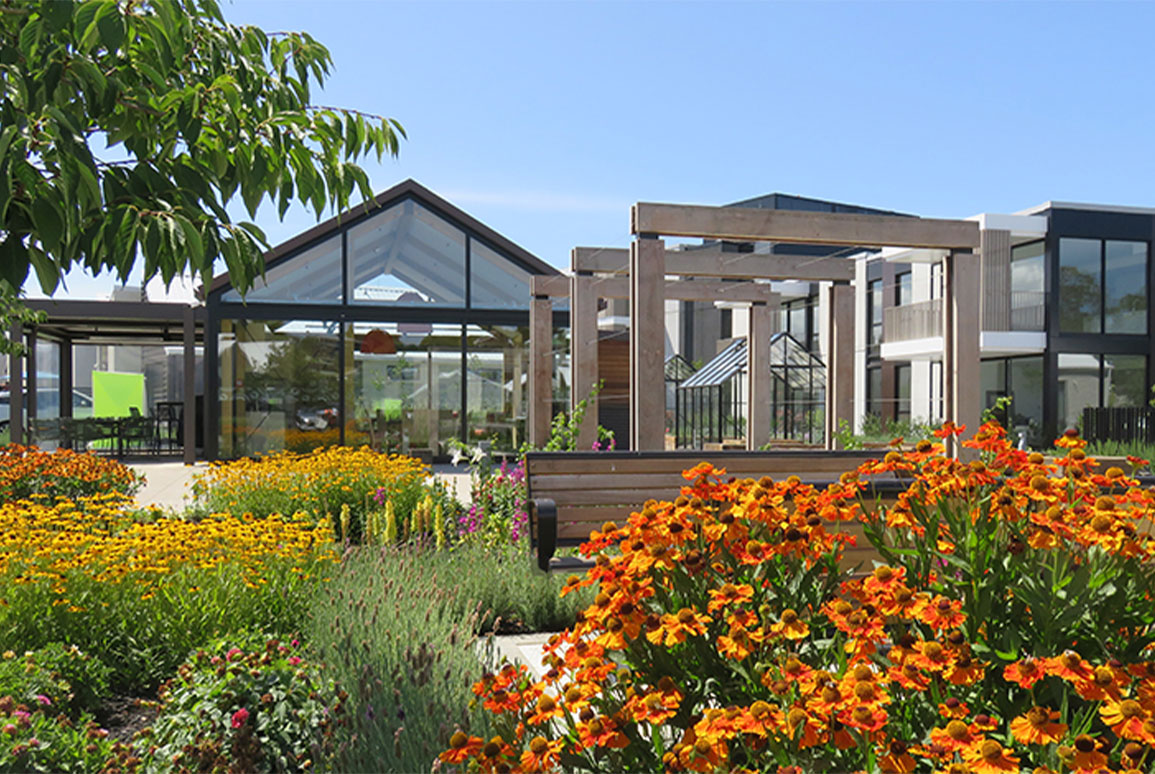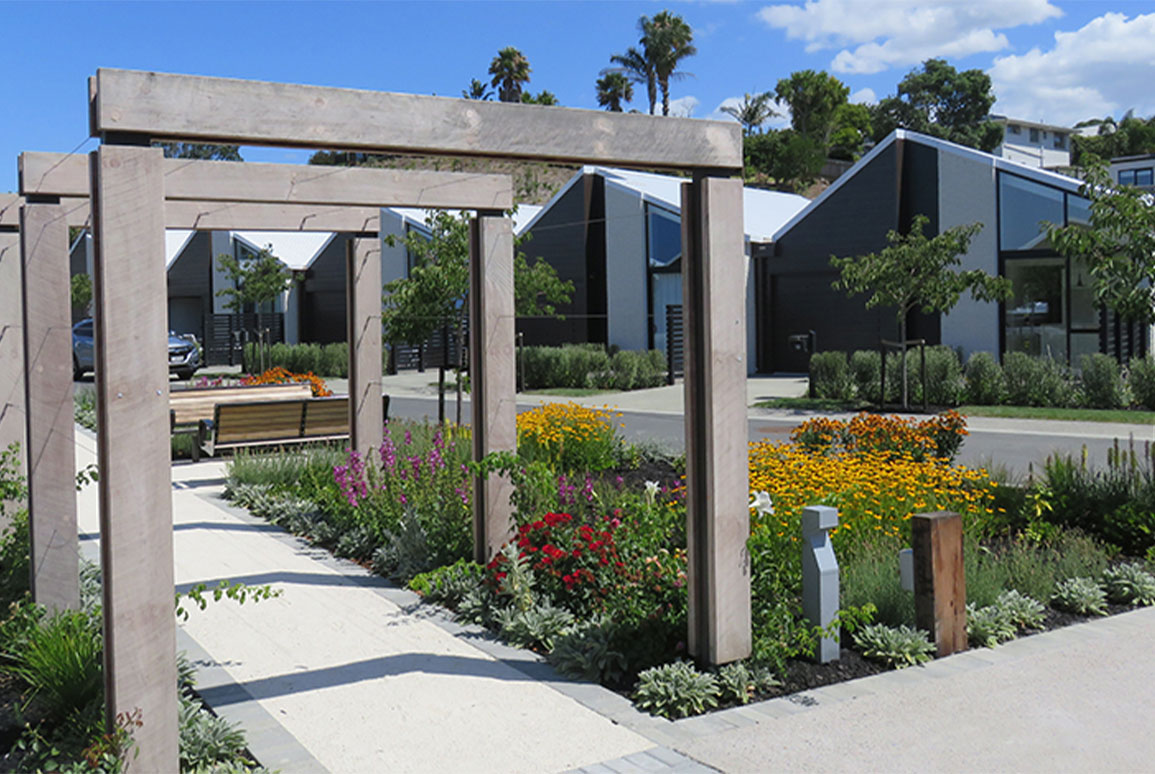Plant selection: Social spaces for senior living communities
18 March 2020
A landscape architect with Boffa Miskell's Auckland office, Peter has been on the design team for several senior living communities, including Gulf Rise, on Auckland's North Shore and Fairway Gardens, MetLifecare’s newest facility in Pakuranga.

“Senior living communities used to have formal hedges and structured flower beds, and a vibe that was very much ‘look-but-don’t touch’. Now, outdoor spaces are treated as community assets — they’re there to be used, and residents are encouraged to be involved,” says Peter Whiting.
“There’s a huge variety of plant species used throughout any community,” he continues. "In Gulf Rise, for example, there are more than ten distinct planting schemes – because what’s appropriate for a shady, low-maintenance terrace garden isn’t what you’d want in the cut flower garden, or to attract bees and butterflies in the Water Garden and Spring Walk features.”
"For private patio gardens here, we wanted a mix that is reasonably hardy and low-maintenance, but provides screening and colour," says landscape architect Emma Todd.
"Among the twelve varities of plants used there are azalea, cordyline, hebe and lavender. Other residential gardens— the manor gardens — use a mix that includes use carex, coprosma, iris and strelitiza," she continues.
“Gardens and outdoor spaces are critical to our residents,” says Jerrod Shearer, village manager at Gulf Rise. “How the village looks is important because this is their new home, and everyone wants to feel proud of their home. And opportunities for activity, and socialising, and just the overall sense of well-being that being outdoors provides makes a real difference in residents’ day-to-day lives.”

The landscape design provides for numerous connected outdoor spaces including a social garden, butterfly walk, production gardens, glass house and pavilions and outdoor dining areas. There are also sensory gardens, and private garden spaces attached to residences.
Thanks to an appropriate mix of native trees and flowering plants, bees and butterflies abound, both along the internal walkways and on a perimeter slope. In fact, Jarrod says that he’d like to investigate whether beehives could be installed under the trees. “Wouldn’t it be fantastic if we could make our own organic honey for use in the kitchen, and for residents?”
Raised garden beds are centred around a glass house and outdoor dining pavilion. Jerrod says “The area around the pavilion has the most social activity these days. We hold many of our community events there, and it’s a popular spot with visitors, too.”
“These senior living communities are so rewarding to design, because we’re creating spaces for people to enjoy, and take ownership of,” says Peter. “We’re continually learning from the feedback we get from residents and staff; and it’s an on-going evolution.”
"We take a great deal of care with spaces like the cut flower garden," says Emma. "It's essential that we have colours that work together and that appear around the same time; and we also need a steady rotation of flowers that bloom as the seasons change. Residents can go and cut flowers themselves, so we specify plants that can handle that amount of cutting and still continue to bloom."
"There will be on-going changes to that space, as it becomes clear which plants are most popular with residents; and it's likely that annuals may be used as filler plants for colour and seasonal variety," she continues.
Peter says that thanks to feedback from residents, they look at the plant selection and design from a number of angles — including from above.
"Many residents spend more time inside, looking out at these spaces from the window, so it all has to look good from ground-level and also from that overhead aspect."



